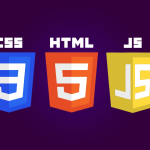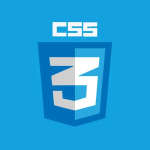Introduction
In the world of web development, HTML (HyperText Markup Language) serves as the fundamental building block of every website you visit. From simple blogs to complex e-commerce platforms, it provides the basic structure that defines how content is displayed on the web. Whether you are a beginner trying to learn coding or an experienced developer polishing your front-end skills, understanding it is the first step to mastering web development.
Table of Contents
What is HTML and Why It Matters
HTML is not a programming language but a markup language that uses tags to describe the structure of web pages. Each element on a website, such as headings, paragraphs, links, images, and buttons, is defined using tags.
For example, a paragraph is created with the <p> tag, while images are added using the <img> tag. The simplicity of it makes it ideal for beginners and essential for all web projects.
You can learn more about how web browsers interpret it by visiting Mozilla Developer Network.
How it Works
HTML uses a system of tags enclosed in angle brackets. Every element usually has an opening tag and a closing tag. The content placed between these tags tells the browser how to display that information.
For instance:
<h1>Welcome to TechSolana</h1>
<p>It is the backbone of every website you see online.</p>
In the above example, <h1> defines a heading, while <p> defines a paragraph. When rendered in a browser, these tags help create a visually structured and readable web page.
Document Structure
Every HTML document follows a specific structure that helps browsers interpret the page correctly. Here’s a simple layout of a standard file:
<!DOCTYPE html>
<html>
<head>
<title>My First Web Page</title>
</head>
<body>
<h1>Hello World</h1>
<p>This is my first document.</p>
</body>
</html>
- The
<!DOCTYPE html>declaration defines the document type and version if it. - The
<html>tag is the root of the page. - The
<head>section contains metadata like the title and linked stylesheets. - The
<body>section contains all visible content.
Elements and Attributes
Each tag can have attributes that modify its behavior or appearance. Attributes provide additional information about an element and are written inside the opening tag. For example:
<img src="logo.png" alt="CodeHaven Logo" width="200">
Here, src defines the image source, alt provides alternative text for accessibility, and width sets the image size.
Attributes enhance it’s flexibility and play an important role in optimizing websites for accessibility and search engines.
Modern HTML5 Features
With the introduction of HTML5, developers gained new elements that support multimedia, interactivity, and cleaner code. HTML5 allows you to embed videos using the <video> tag, include audio using <audio>, and create responsive layouts using semantic elements like <header>, <footer>, <article>, and <section>.
For example:
<video controls>
<source src="intro.mp4" type="video/mp4">
Your browser does not support the video tag.
</video>
These new tags make websites faster, more interactive, and more compatible with modern browsers and devices.
Best Practices
When writing it, following best practices ensures that your code remains readable, accessible, and SEO-friendly. Some key practices include:
- Always close your tags properly.
- Use semantic code to give meaning to your content.
- Add
alttext for all images. - Validate your code using tools like W3C Validator.
- Keep your code indentation consistent.
By maintaining these practices, your website becomes more user-friendly and performs better in search engine rankings.
Relation with SEO
It plays a significant role in Search Engine Optimization (SEO). Proper use of headings (<h1> to <h6>), meta descriptions, and title tags helps search engines understand your content. Clean, semantic ensures your website is indexed properly and performs better in organic searches.
You can improve your on-page SEO by learning more about its structure at Google Search Central.
Conclusion
HTML is the backbone of every web project, providing the structure upon which all websites are built. Understanding it helps developers create organized, accessible, and responsive web pages that look great on any device.
Whether you’re developing your first webpage or optimizing a professional site, it remains an essential skill in your web development journey.
Also Check How to Develop a Mobile App – Comprehensive Guide – 2025











1 thought on “HTML – Powerful Foundation of Web Development – 2025”